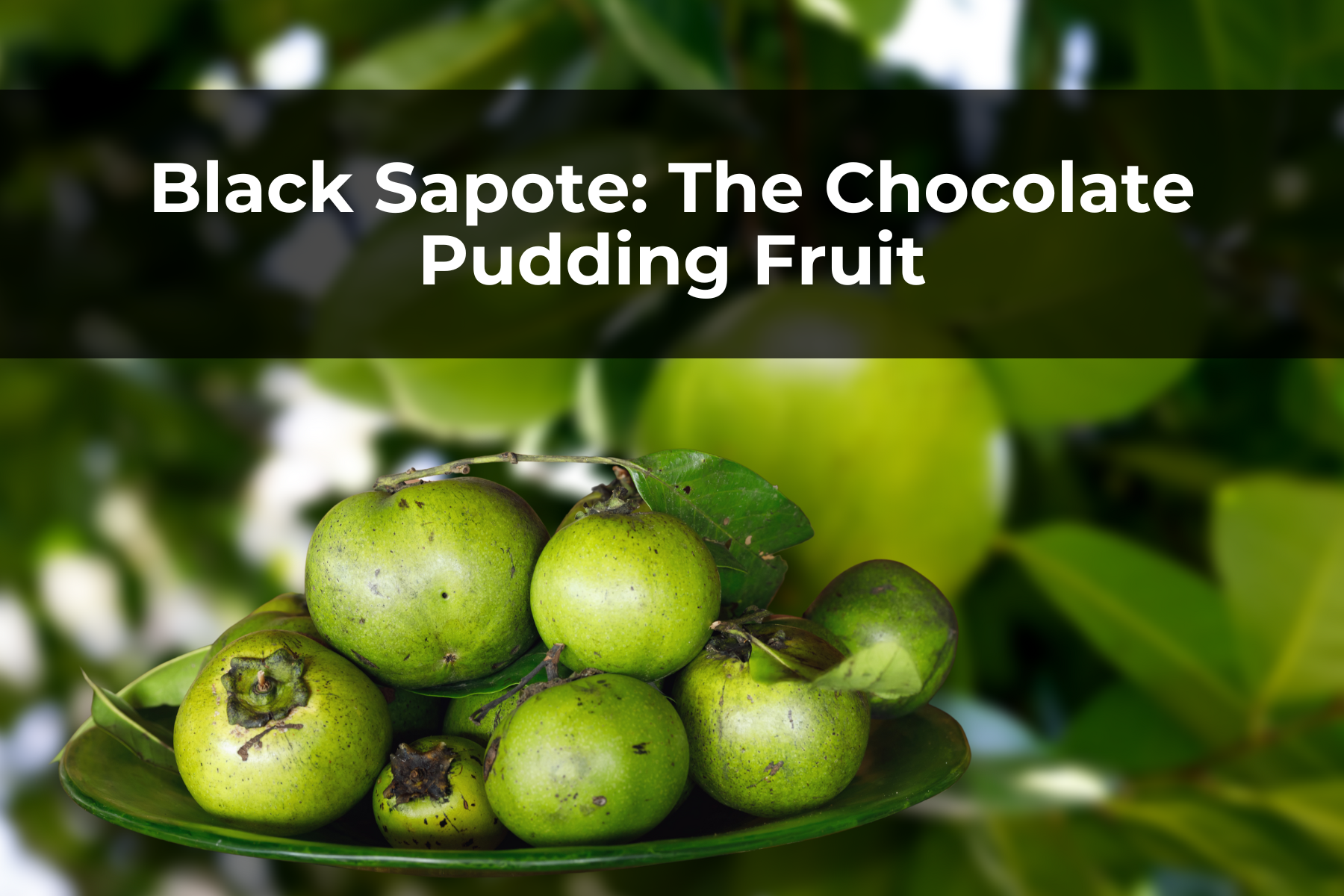Last Updated on June 12, 2023 by Real Men Sow
Black sapote, also known as Diospyros digyna (or Diospyros nigra), is one of the most fascinating tropical fruits. It is native to Mexico’s lowlands rainforests, but it can be found all over Central America, Asia, the Pacific Islands, Asia, and Australia.
It’s the exotic cousin to the persimmon. Black sapote can only grow in tropical and hot climates. Persimmon, on the other hand, thrives in temperate areas and can tolerate freezing temperatures. Because the black sapote has a custard-like texture and a dark brown color, it is sometimes called chocolate pudding fruit.
Eating Black Sapote
Black sapote tastes best when it is fully ripe. Take the halfway cut and scoop the pulp out with a spoon. You can either eat it at room temperature or chill it in the refrigerator for a few hours before you consume it. The pulp can be frozen for later use and will keep fresh for up to one month.
The pulp is very creamy and has a subtle sweet taste. The flavor is a bit bland, so it might not be appealing to everyone. Although it has the consistency of pastry cream or pudding, it doesn’t have a chocolate taste.
When blended with other tropical fruits, black sapote can make great smoothies and shakes. People in Hawaii mix black sapote pulp and other ingredients (especially cacao powder or melted chocolate) to make mouthwatering desserts such as cakes, and brownies.
Growing Black Sapote
The climate that this fruit like is a tropical/subtropical one with lots of rain and humidity. The seed is either directly planted in the ground or placed in a pot and then transplanted later. The seed may take up to 30 days to germinate. The fastest way to plant a tree is by air-layering. A generous application of rooting hormone to stem cuttings is also an option.
The soil in which black sapote thrives is slight to moderately acidic. Although it prefers full sun, it can be planted in partial shade. When the tree is young, water and mulch regularly. Once established, it doesn’t require much maintenance.
How to grow Black Sapote in Pots?
One may successfully cultivate a black sapote tree in a container. The common practice among commercial growers is to start seedlings in containers and wait until they reach a height of 1-2 feet before transferring them to the ground.
Maintaining growth in the container is OK. Make sure the pot you choose has nice big holes on the bottom for drainage. Choose a fine-grained organic potting mix for your plants.
Conditions Necessary for the Growth of Black Sapote
Position
The ideal conditions for growing this fruit are a bright, warm spot that is protected from wind and frost. Fruits that fall from trees may leave a lot of dirt on the sidewalks and streets, making them unsuitable for urban areas. However, you may grow it successfully in your own backyard orchard.
Soil
It does best on soils that are light, well-drained, and rich in organic matter, although it may be grown everywhere.
Watering
The fruit is not drought-resistant, unlike the majority of its genus. Despite this, it thrives in wet ground. Keep the soil just damp, and water the plant often and generously, particularly while it is still young and establishing itself. After a tree reaches maturity (after five years or more), it needs little care and should only be watered during dry spells.
Spacing
The separation between black sapote trees should be at least 25 feet.
Temperature
As with other tropical fruit trees, the ideal environment is warm and humid. Bear in mind, however, that the plant is cold tolerant; a fully grown tree may survive temperatures as low as 28 degrees Fahrenheit (2-3 C below zero).
Nutritional Values and Health Benefits
Black sapote is rich in vitamin C (anti-infective, immune booster, and protect against disease and infections) and vitamin A (which ensures good vision). It’s low in fat and high in antioxidants and minerals, including iron, calcium, and phosphorus (which promote healthy skin and heart, kidneys, and bones).
They are also rich in dietary fiber which can help maintain good digestive health and increase blood sugar levels. A cup of black Sapote pulp contains over 2.5g of protein. This makes it an excellent source of plant-based protein for vegan diets.

